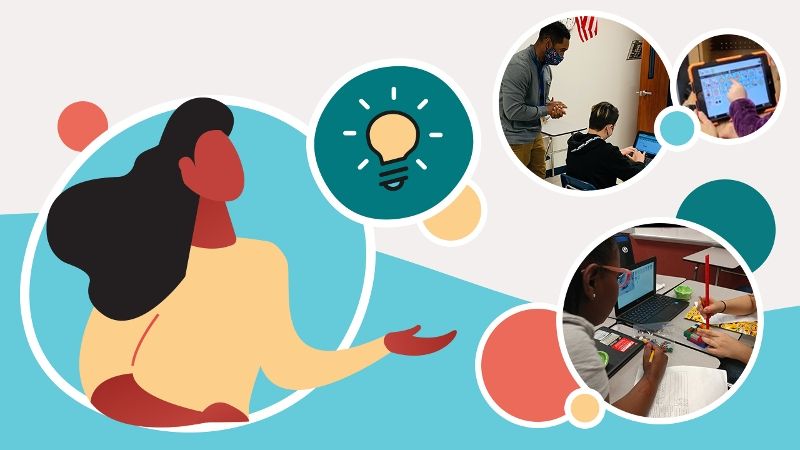Leverage Accessible Standardized Assessments

Get Started Leveraging Accessible Assessments:
Ensuring procurement policies include accessibility considerations is priority number one. It is critical to develop district policy and procedures that provide educators with a path to implement assessments offering optimal usability for students that require assistive technology and accessibility considerations.
Practice: The district procures and administers standardized assessments, including universal screeners, that are inclusive and accessible to ensure all students can demonstrate what they know and can do.
Actions that lead to leveraging accessible standardized assessments include:
- Include accessibility standards in selection: The procurement policies include accessibility standards and requirements in the selection criteria of district assessment systems.
- Align assessment and instructional accommodations: The district implements procedures that align assessment accommodations with accommodations students use for learning in daily instruction, including accessibility and AT requirements.
- Train educators on available accommodations: The district provides relevant training to every educator regarding available and universal supports, and allowable accommodations on district and state assessments.
Learn From Our Partners

- Blog Post: Five Things AT Leaders Need to Know About Inclusive Technology Systemsexternal site, UDL Center
- Blog Post: Five Things EdTech Leaders Need to Know About Inclusive Technology Systemsexternal site, UDL Center
- Podcast: It's Not Cheating! Myth Bustingexternal site, AEM Center at CAST
- Webinar Series: Learning with the Authors of Inclusive Learning 365, Center on Inclusive Technology in Education Systems (CITES) at CAST
- Case Story: BCSP | Baltimore, MDPDF document
Resources
- Improving the Accessibility of State-Mandated Assessments: Findings from a Focus Group of State Education Agency Representativesexternal site, National Center on Accessible Educational Materials at CAST
- Recommendations for Improving the Provision and Use of Braille for State-Mandated Assessmentexternal site, National Center on Accessible Educational Materials at CAST
- How to Select, Administer, and Evaluate Use of Accessibility Supports for Instruction and Assessment of All Studentsexternal site, Council of Chief State School Officers
Fridley's Story

Fridley Public Schools (Fridley, Minnesota)
Fridley Public Schools serve approximately 3,000 students in Fridley, MN. Fridley’s work to bring together assistive technology (AT), information technology (IT), and education technology (EdTech) to benefit students with disabilities has increased over several years. The district started by building educator capacity to consider and implement the use of universal tools during assessment as an essential foundation for ensuring its assessment system is balanced. The Fridley team’s focus has been to ensure that learners are able to make informed choices about what technologies and supports can help them in different situations. As staff members feel more comfortable and confident discussing and advocating for accessibility features and the use of AT supports for instruction, the door opens to align these supports during assessment opportunities.
As part of Fridley’s collaborative approach, AT specialists and special educators work closely with the district’s testing coordinator to identify the various accessibility tools and accommodations available. Building educator capacity on the allowable universal tools available as part of their summative assessments offers Fridley’s inclusive technology team the opportunity to support a broad scope of student assessment and instructional needs. Training students on the universal features for instructional and assessment opportunities ensures that students know and understand the tools available to them. Training the AT team on universal tools allows them to focus more on providing eligible students with the appropriate tools they need to access the assessment(s). For example, the AT team may provide and train a student with low vision to use a large interactive screen while teaching another to use an eye-gaze system to access their assessment.
Supporting Research
Mac Iver, M.A., Sheldon, S., & Clark, E. (2021) Widening the portal: How schools can help more families access and use the parent portal to support student success, Middle School Journal, 52:1, 14-22, https://doi.org/10.1080/00940771.2020.1840269external site